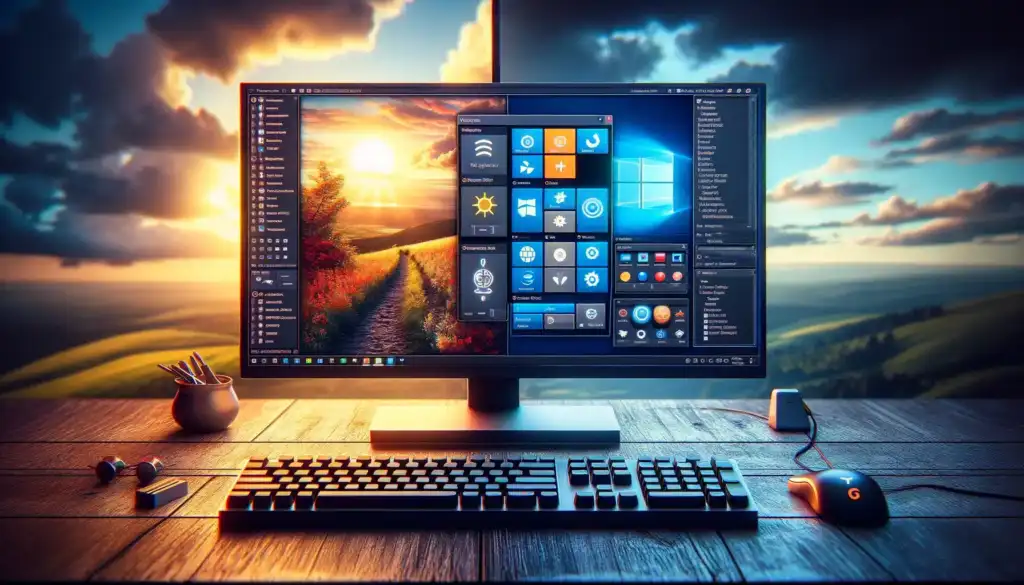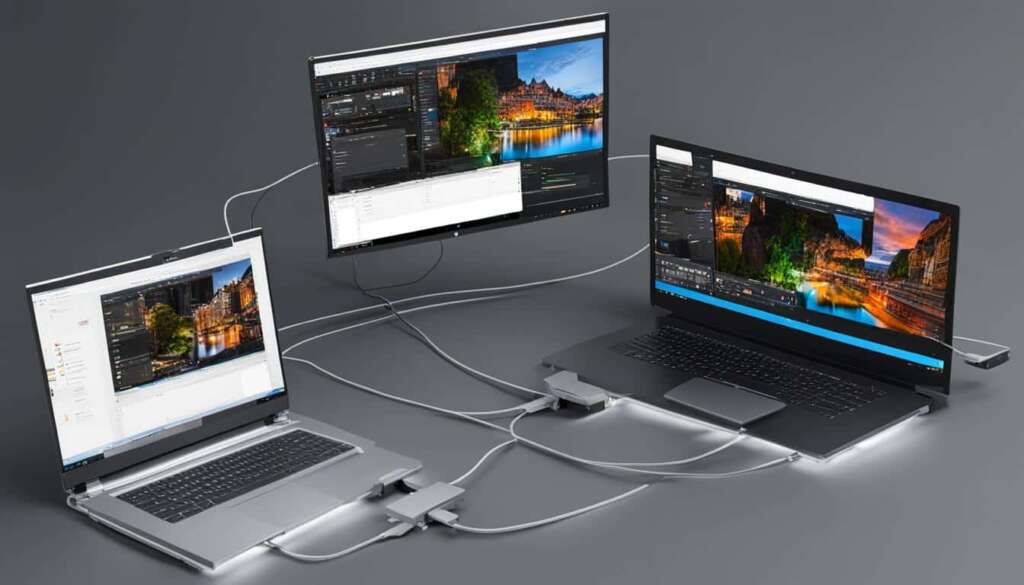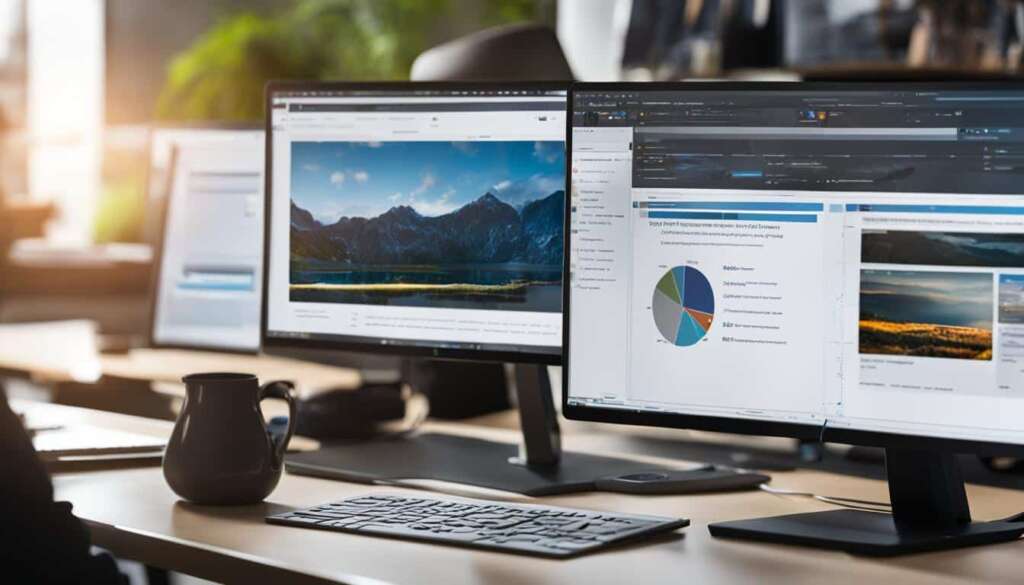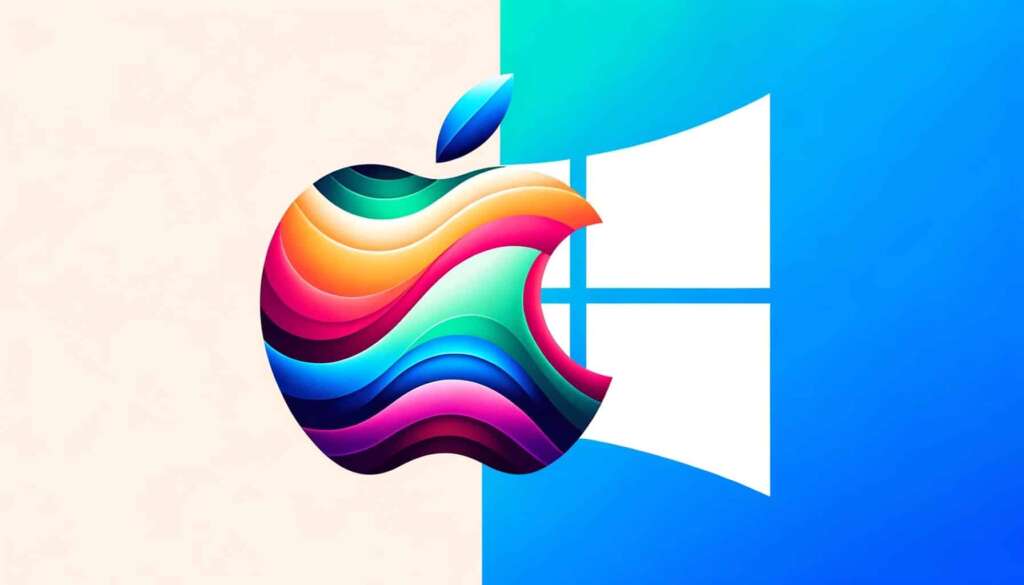Table of Contents
Dual booting allows you to have two operating systems running on the same machine, providing several advantages. These include maximum gaming capabilities, better performance than a virtual machine, greater software compatibility, advantages for programming, and ease of setup.
Dual booting your computer opens up a world of possibilities. Whether you’re a hardcore gamer, a software developer, or simply someone who wants access to the best of both operating systems, dual booting offers a unique solution. With the ability to run Windows and Linux on the same machine, you can enjoy the advantages that each OS has to offer.
Maximum Gaming
Dual booting your computer allows you to experience maximum gaming capabilities by accessing both Windows and Linux operating systems. While native gaming on Windows is well-established, Linux has made significant progress in terms of game availability. Through Valve’s work on Proton, it is now possible to play many Windows-only games on Linux, expanding the gaming options for users.
Table: Comparison of Gaming Capabilities
| Windows | Linux | |
|---|---|---|
| Game Availability | Wide range of games | Expanding library through Proton |
| 16-bit Support | Graceful support for 16-bit programs | |
| Performance | Well-supported |
In addition to expanded game libraries, Linux also offers graceful support for 16-bit programs, which modern Windows architecture cannot handle. This means that users can enjoy retro gaming experiences and access older programs that are not compatible with the latest Windows versions.
Linux’s compatibility with Windows games and 16-bit programs provides dual booting users with a wide range of gaming options and a nostalgic trip down memory lane.
Better Performance Than a Virtual Machine
Dual booting offers better performance compared to using a virtual machine. When you run an operating system natively on your machine through dual booting, it has full access to the hardware components, resulting in improved speed and responsiveness. In contrast, virtual machines can be more resource-intensive and may require higher specifications for optimal performance.
By utilizing dual booting, you can fully harness the capabilities of your hardware, allowing for smooth multitasking and efficient utilization of system resources. This is especially beneficial if you have an older or less powerful computer, as running a second operating system using a virtual machine may not be as viable due to the additional system overhead.
With dual booting, you can enjoy the advantages of both operating systems without compromising on performance, as each OS operates independently, providing a seamless and efficient computing experience.
| Advantages of Dual Booting | Advantages of Virtual Machine |
|---|---|
| Full hardware access | Convenience of switching between operating systems without restarting |
| Optimized performance | Enhanced security through isolated environments |
| Efficient resource utilization | Ability to easily reset and revert to previous snapshots |
Greater Software Compatibility
Dual booting provides a solution for greater software compatibility by allowing access to a wide range of programs and services from both operating systems. In some cases, certain software may not function as well or may not be available in one operating system compared to the other. For example, in its early years, streaming giant Netflix did not support streaming on Linux. However, with the increasing popularity of Linux, this issue has been addressed, and now Linux users can enjoy streaming their favorite shows and movies on Netflix.
Another advantage of dual booting is the growing selection of free software specifically designed for Linux. Linux offers a multitude of free desktop alternatives to paid tools on other operating systems like Windows or macOS. This provides users with more options and flexibility in choosing software that suits their needs and preferences without incurring additional costs. Whether it’s productivity tools, creative software, or development environments, Linux has a thriving open-source community contributing to its software ecosystem.
“Dual booting ensures greater software compatibility, allowing access to all your favorite programs and services from both operating systems.”
By dual booting, users can enjoy the best of both worlds. They can run Windows-only programs that may be essential for their work or personal use, while also exploring the wealth of free and open-source software available on Linux. This flexibility in software compatibility is a significant advantage for individuals who require specific programs or who want to explore the vast array of options offered by different operating systems.
Table: Comparison of Software Compatibility in Dual Booting
| Operating System | Software Compatibility |
|---|---|
| Windows | – Wide range of commercial software support – Extensive gaming library – Access to Microsoft Office suite |
| Linux | – Growing selection of free and open-source software – Natively supports programming languages and tools – Increasing compatibility with popular commercial software |
With dual booting, users can maximize their access to software that might otherwise be limited by using a single operating system. This can be particularly beneficial for individuals who rely on specific software for their work or who want to explore alternative options for their personal use. By harnessing the combined software compatibility of both operating systems, dual booting offers a versatile solution that caters to diverse software requirements.
Programming Advantages
When it comes to programming, dual booting with Linux offers several advantages that make it an appealing option for developers. Linux is renowned for its robust support for a wide range of programming languages and coding apps. The open-source nature of the operating system allows developers to easily customize their programming environment to suit their needs.
One of the key advantages of dual booting for programming is the strong support for Bash, the command-line interface found on Linux systems. Bash provides powerful scripting capabilities and a familiar environment for developers, allowing them to automate tasks and streamline their workflow. This proficiency in Bash can also enhance a developer’s resume, as its knowledge is highly valued in the industry.
Furthermore, Linux offers a vast selection of free and open-source software tools that are specifically designed for developers. These tools provide alternative solutions to expensive proprietary software commonly used on other operating systems. With Linux, developers can access high-quality coding apps without the need for costly licenses, allowing them to save money while still having access to professional-grade software.
In conclusion, dual booting with Linux provides various programming advantages, such as extensive language support, robust Bash capabilities, and access to a wide range of free coding apps. Developers who prioritize flexibility, customization, and cost-effectiveness in their programming environment will find dual booting with Linux to be a valuable option.
Ease of Setup
Dual booting is a straightforward process that can be easily set up with proper guidelines. Although some people may believe it to be complicated, following step-by-step instructions can ensure a smooth installation. One important tip is to install Linux as the second operating system after the primary one. This sequence helps in avoiding potential conflicts during the installation process.
Sharing files between the two operating systems is also feasible when dual booting. Linux allows seamless access to many Windows files, making it convenient to work with data across different platforms. Whether you need to access documents, media files, or other types of data, dual booting enables you to switch between operating systems and easily share files.
To make the setup process even easier, there are various online resources that provide detailed guidelines and tutorials. These resources offer step-by-step instructions, accompanied by screenshots and videos, ensuring that even beginners can successfully set up a dual boot system. With the help of these guidelines, anyone can take advantage of dual booting without unnecessary hassle.
Table: Dual Boot Setup Guidelines
| Step | Description |
|---|---|
| Step 1 | Backup your important data |
| Step 2 | Partition your hard drive |
| Step 3 | Create bootable media for the second operating system |
| Step 4 | Install the second operating system |
| Step 5 | Configure the dual boot menu |
| Step 6 | Install necessary drivers and updates |
| Step 7 | Set up file sharing between operating systems |
By following these guidelines, users can successfully set up a dual boot system and enjoy the benefits of having two operating systems on one machine.
Complex Setup Process
Setting up a dual boot system can be a bit more complex compared to using a virtual machine. It involves partitioning your hard drive, allocating space for the second operating system, and installing it using a bootable device. This process requires careful attention to detail and can be time-consuming.
One of the main challenges in the setup process is partitioning the hard drive. This involves dividing your disk space into separate sections for each operating system. If not done correctly, it can lead to data loss or system instability. It is crucial to back up your important files before attempting to partition the drive.
During the installation of the second operating system, there is also a potential for errors or conflicts to occur. These can range from compatibility issues with specific hardware components to software conflicts between the two operating systems. Resolving these errors may require technical knowledge and troubleshooting skills.
It is essential to consider the potential risks and complexities involved in the setup process before deciding to dual boot your computer. If you are not confident in your technical abilities or are concerned about the potential for errors, it may be more suitable to use a virtual machine instead, which offers a simpler setup process.

| Advantages of Dual Booting | Complexities of Dual Booting |
|---|---|
| Maximum gaming capabilities | Partitioning the hard drive |
| Better performance than a virtual machine | Potential errors and conflicts during installation |
| Greater software compatibility | Time-consuming setup process |
| Advantages for programming | |
| Ease of setup |
The Security Risks of Dual Booting
Dual booting offers numerous advantages, but it’s important to consider the potential security concerns that come with running multiple operating systems on the same machine. While these risks are not common, they are worth understanding before deciding to dual boot.

One of the primary security risks of dual booting is that an issue in one operating system can impact the entire system. For example, if one OS becomes infected with malware or experiences a security breach, it can potentially compromise the data and security of the other OS as well. This is because both operating systems share the same hardware resources and can access each other’s files.
It’s also worth noting that managing security updates and patches can become more complex when dual booting. Each operating system requires its own set of updates and security measures, and keeping both systems up to date can be challenging. Failure to update one OS could leave it vulnerable to security threats that could ultimately affect the entire system.
“One of the primary security risks of dual booting is that an issue in one operating system can impact the entire system.”
Minimizing Security Risks
While there are security risks associated with dual booting, there are steps you can take to minimize these risks:
- Implement thorough security measures on both operating systems, including antivirus and firewall software.
- Regularly update and patch both operating systems to ensure they have the latest security fixes.
- Use strong and unique passwords for each operating system to prevent unauthorized access.
- Consider encrypting the drives or partitions on which the operating systems are installed to protect your data.
By following these precautions, you can help mitigate the potential security risks of dual booting and ensure the safety of your system and data.
The Convenience of OS Switching in Virtual Machines
Virtual machines offer a seamless and convenient way to switch between operating systems without the need for a restart. This flexibility is especially valuable for users who need to work across multiple OSs simultaneously or switch between applications quickly and easily.
With virtual machines, you can run multiple operating systems side by side on the same physical machine. This means you can have Windows, Linux, and macOS all running simultaneously, each in its own virtual environment. Switching between these OSs is as simple as clicking a button or using a keyboard shortcut, allowing you to instantly transition from one operating system to another.
The convenience of OS switching in virtual machines extends beyond productivity. It also enables easy testing and troubleshooting of software across different operating systems. Developers can quickly switch between different environments to identify and resolve compatibility issues, ensuring their applications work flawlessly on various platforms.
Table: Comparison of OS Switching Methods
| Method | Virtual Machines | Dual Booting |
|---|---|---|
| Setup Complexity | Relatively simple, requires installing a virtual machine software | More complex, involves partitioning the hard drive and installing multiple operating systems |
| Performance | May have slightly higher resource usage due to virtualization | Provides direct hardware access, usually resulting in better performance |
| Security | Offers enhanced security as issues in one OS do not affect others | Can pose security risks as issues in one OS can potentially impact the entire system |
| Flexibility | Allows for easy OS switching without the need for a restart | Requires restarting the computer to switch between operating systems |
In summary, virtual machines provide a convenient solution for OS switching. They allow you to easily and quickly switch between operating systems, making them ideal for tasks that require seamless transitions between different environments. Whether you’re a developer testing software or a user working across multiple platforms, virtual machines offer the flexibility and convenience you need.
Enhanced Security and Portability
When it comes to virtual machines, security is a top priority. One of the key advantages of using a virtual machine is the enhanced security it provides. In a virtual machine setup, any issues or compromises within the virtual machine’s operating system does not affect the primary operating system. This isolation ensures that if one OS encounters a malware attack or a security breach, it does not jeopardize the data or stability of the other OS. This added layer of security can give users peace of mind, especially when dealing with sensitive information or when testing potentially risky software.
Another benefit of virtual machines is the ease of resets and reversions. In virtual machine environments, it is simple to reset a virtual machine to its original state or revert to previous snapshots. This capability is particularly useful when experimenting with different software configurations or testing new applications. If something goes wrong or if changes need to be undone, a virtual machine allows users to quickly and easily restore the system to a known good state. This flexibility can save time and effort, making virtual machines a valuable tool for both developers and regular users alike.
Portability is another advantage offered by virtual machines. Virtual machines are essentially software containers that encapsulate an entire operating system and its associated applications. This means that virtual machines can be easily transferred from one computer to another, irrespective of the host operating system. Whether you need to move your virtual machine to a different physical machine or switch between different operating systems, the portability of virtual machines allows for hassle-free migration and flexibility. This makes it an appealing option for users who frequently change their hardware or need to work across multiple systems.
Table: Enhanced Security and Portability Comparison
| Advantages | Virtual Machine | Dual Booting |
|---|---|---|
| Enhanced Security | Isolated environment protects primary OS | Potential impact on entire system if one OS is compromised |
| Resets and Reversions | Easy to reset or revert to previous snapshots | Reconfiguration or restoration can be complex and time-consuming |
| Portability | Can be transferred between different machines and operating systems | Requires reinstalling on each system or physically moving the hard drive |
Conclusion
When it comes to choosing between dual booting and using a virtual machine, it ultimately depends on your specific needs and preferences. Dual booting provides better performance and direct hardware access, making it ideal for maximum gaming capabilities and software compatibility. However, it requires rebooting to switch between operating systems, which may not be convenient for everyone.
On the other hand, virtual machines offer convenience, flexibility, and enhanced security. They allow for seamless switching between operating systems without the need for a restart, making it effortless to work across multiple OSs simultaneously. Virtual machines also provide added security, as any issues or compromises within the virtual machine’s OS do not affect the primary OS. Additionally, they offer the ability to reset to previous snapshots if needed and are easily portable.
When making a decision, consider factors such as your hardware capabilities, software requirements, usage scenarios, and personal goals. If you prioritize performance and direct hardware access, dual booting may be the better option for you. However, if convenience, flexibility, and enhanced security are your main concerns, a virtual machine might be the more suitable choice.
FAQ
What is dual booting?
Dual booting allows you to have two operating systems running on the same machine.
What are the advantages of dual booting?
Dual booting provides maximum gaming capabilities, better performance than a virtual machine, greater software compatibility, advantages for programming, and ease of setup.
Can I play Windows-only games on Linux through dual booting?
Yes, dual booting allows you to access both Windows and Linux operating systems, giving you the best of both worlds when it comes to gaming. Linux has made significant progress in terms of game availability, and Valve’s work on Proton has made it possible to play many Windows-only games on Linux.
Does dual booting offer better performance than a virtual machine?
Yes, dual booting provides better performance because the operating system has full access to the hardware components. Virtual machines can be more system-intensive and may require higher specifications for decent performance.
Are all software programs compatible with dual booting?
Dual booting ensures greater software compatibility, allowing you to access all your favorite programs and services from both operating systems. Some programs may not function as well in one OS compared to the other.
What advantages does Linux offer for programming through dual booting?
Linux is free and supports a wide range of programming languages and coding apps. It also has strong Bash support and can enhance a developer’s resume.
Is dual booting easy to set up?
Yes, contrary to popular belief, dual booting is relatively easy to set up. There are guidelines available to ensure a smooth installation process.
What are the potential downsides of dual booting?
Dual booting can be more complex to set up compared to using a virtual machine. It involves partitioning the hard drive and installing the second OS using a bootable device. There may be potential errors or conflicts during the installation process.
Are there any security concerns with dual booting?
Yes, dual booting can pose security concerns as an issue in one operating system can potentially impact the entire system. Malware attacks or compromises in one OS could jeopardize the data in the other OS as well.
What is the advantage of using a virtual machine for OS switching?
Virtual machines offer seamless switching between operating systems without the need for a restart. This is ideal for users who need to work across multiple OSs simultaneously and switch between apps quickly and easily.
Does using a virtual machine provide enhanced security?
Yes, virtual machines offer enhanced security as any issues or compromises within the virtual machine’s OS do not affect the primary OS. They also allow for easy resets and the ability to revert to previous snapshots if something goes wrong.
How do I choose between dual booting and using a virtual machine?
Choosing between dual booting and using a virtual machine depends on your specific needs and preferences. Consider your hardware capabilities, software requirements, usage scenarios, and personal goals when making a decision.
Source Links
- https://www.hongkiat.com/blog/dual-booting-vs-virtual-machine/
- https://www.makeuseof.com/tag/reasons-dual-boot-linux/
- https://www.linkedin.com/advice/1/how-can-you-choose-between-dual-boot-virtual













